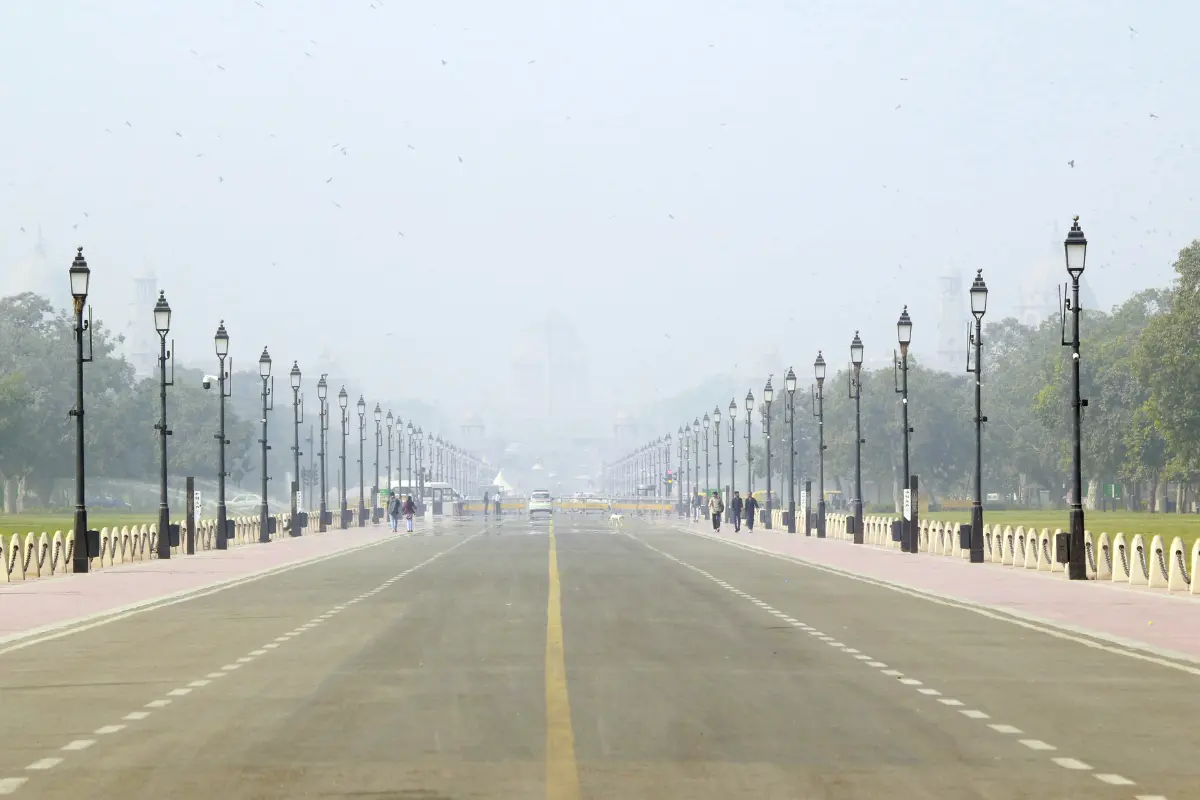
Air quality in Delhi plunged further into the ‘very poor’ zone on Monday, with the Air Quality Index (AQI) hitting alarming levels across the city.
According to data from the Central Pollution Control Board (CPCB), Delhi’s AQI was recorded at 347 early in the morning, while some areas reported figures exceeding 400, marking severe pollution levels as winter intensifies.
Delhi’s pollution crisis is impacting areas beyond the city limits as well, with neighboring cities in Haryana and Uttar Pradesh seeing similarly high levels.
AQI figures from the Delhi-NCR region show Gurugram at 302, Noida at 237, and Ghaziabad at 242, all far above recommended limits. Faridabad showed a slight reprieve at 165 but still ranks in the ‘unhealthy’ category.
Delhi’s Pollution Hotspots Register Severe Levels
In Delhi, pollution hotspots continued to show hazardous AQI levels.
Jahangirpuri recorded the highest AQI at 409, marking one of the worst-hit areas in the city.
Anand Vihar, a major transport hub, registered an AQI of 378, while Bawana saw a peak AQI of 400.
Other densely populated areas such as Alipur, Ashok Vihar, and Burari also recorded dangerous levels, with AQI readings nearing or surpassing 350.
Several other areas – Lodhi Road, ITO, Dwarka, and the Dr. Karni Singh Shooting Range – reported AQI levels in the 300s, while the IGI Airport recorded a level of 336.
Public health experts are urging Delhi residents to take precautions, limiting outdoor activities to minimize exposure.
Government Initiatives To Address Pollution Surge
In response to the deteriorating air quality, the Commission for Air Quality Management (CAQM) has intensified efforts under the Graded Response Action Plan (GRAP).
The plan includes restrictions on construction activities, penalties on polluting industries and vehicles, and strict monitoring of air quality across the National Capital Region (NCR).
To reduce dust and particulates, authorities have deployed 600 mechanical road sweepers, water sprinklers, and anti-smog guns in key areas.
On 6 November, the Delhi government launched a month-long anti-open burning campaign to further address sources of pollution.
A team of nearly 600 patrolling units will be monitoring open burning activities and inspecting construction sites.
The government is also providing electric heaters to security guards to limit open burning of biomass in colder months, encouraging Resident Welfare Associations (RWAs) and construction agencies to join in these efforts.
Winter Action Plan Expands To Combat Rising Pollution
The Delhi government recently unveiled an expanded Winter Action Plan with 21 specific points to tackle pollution, building on last year’s 14-point strategy.
Key initiatives include drone monitoring to detect stubble burning, enhanced anti-dust measures, and a crackdown on unregulated construction.
Authorities are also actively coordinating with neighboring states Uttar Pradesh and Haryana to combat cross-border sources of pollution.
Delhi Environment Minister Gopal Rai, following a review meeting, emphasized the urgency of cooperation across regions.
“Addressing this issue requires a collective response,” he stated. “We urge neighboring states to step up their pollution control measures for a more significant impact.”
Rising Concerns As Health Experts Warn Residents
With AQI levels continuing to rise, doctors and health experts are advising residents to wear protective masks, reduce outdoor activities, and use air purifiers indoors.
The poor air quality can worsen respiratory conditions and poses particular risks to children, the elderly, and those with pre-existing health conditions.
As the season progresses, Delhi’s pollution levels are expected to remain a pressing concern, driving intensified efforts to mitigate health impacts and bring some relief to the city’s air.
Also Read: Maha Kumbh 2025: Water Police To Ensure Devotee Safety With 25 High-Tech Jet Skis
To read more such news, download Bharat Express news apps


















